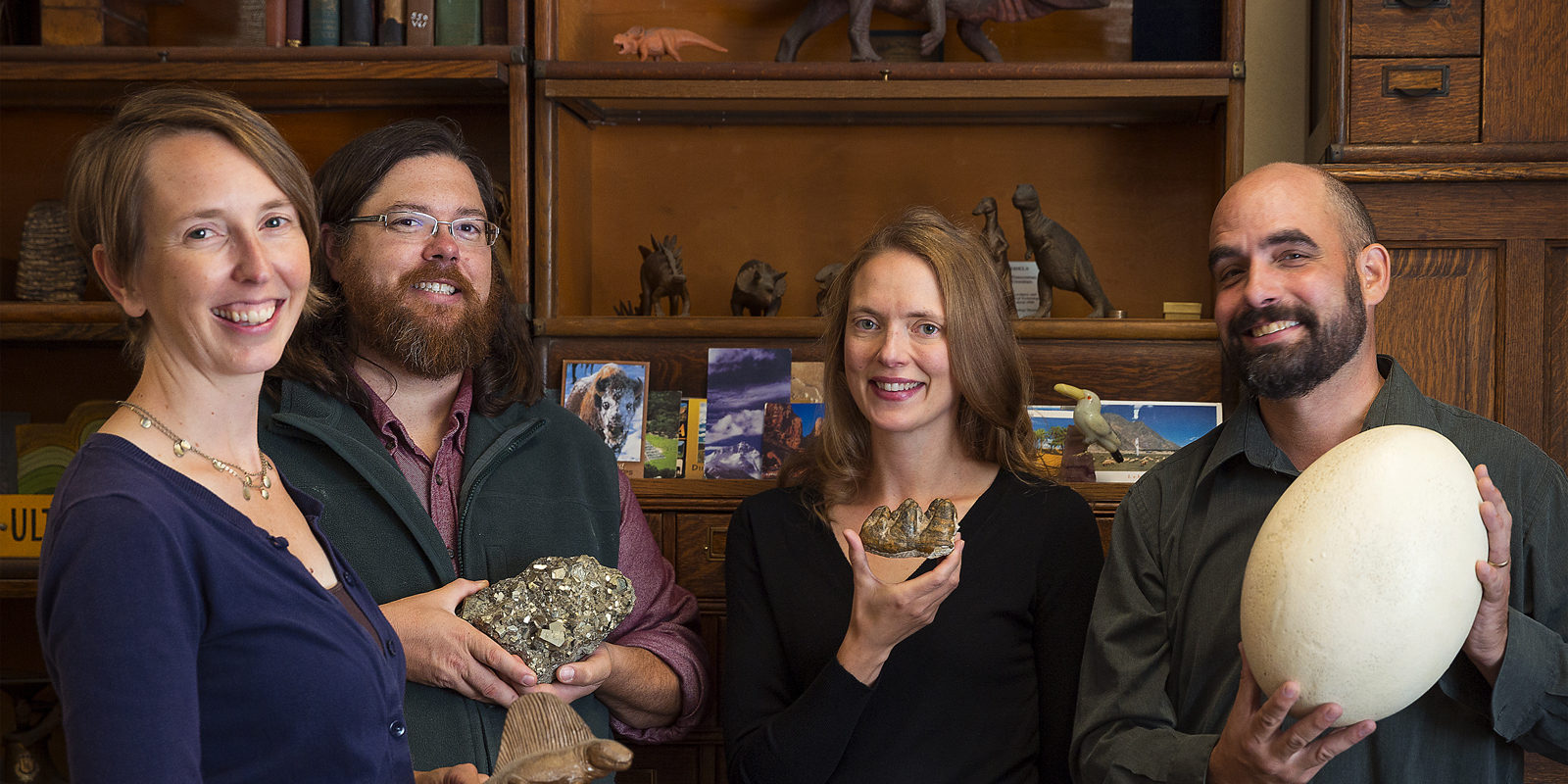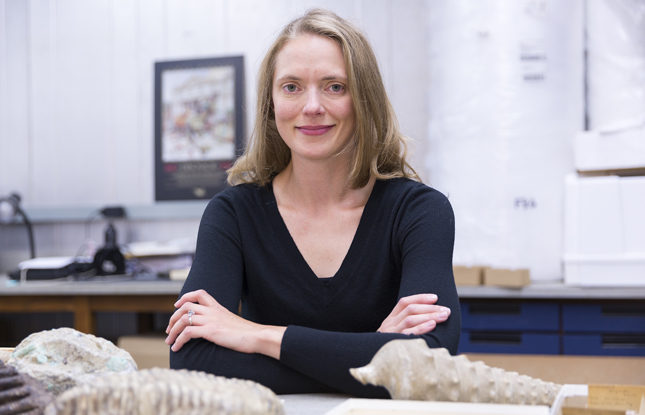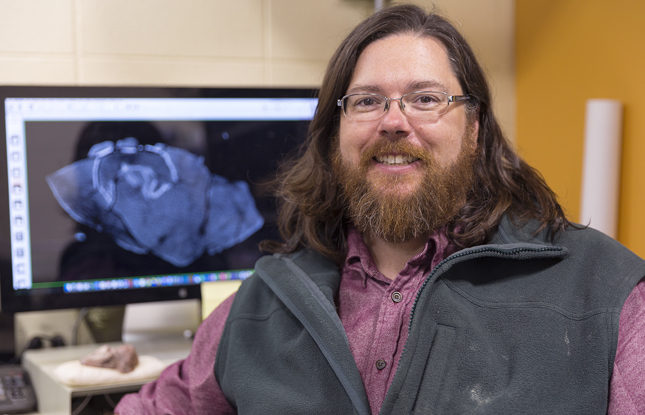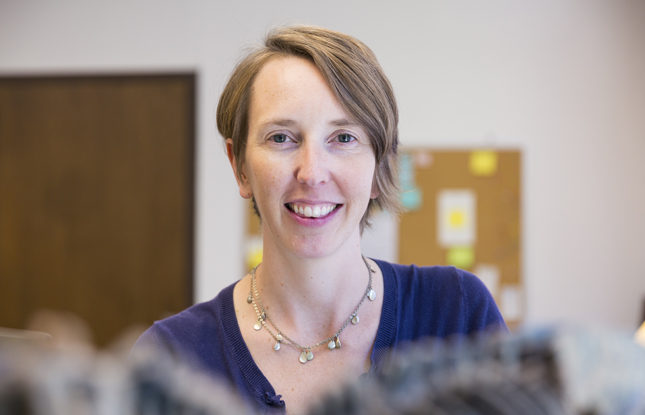From its earliest days, the University of Wisconsin-Madison Geology Museum was a communal undertaking. The first UW Board of Regents meeting, in 1848, included a call to create "a geological and mineralogical cabinet of the various ores, rocks, fossils, &c., found within the state."
Madison resident H.A. Tenney took up the task and solicited donations in a letter to "friends of science and general education" in "every assembly district" across Wisconsin. Specimens soon started to pour in.
And that legacy of generosity, of community contributions for the greater good of science and shared knowledge, continues today.
"That is how the museum started, and that is how it has grown," says Rich Slaughter, the museum's gregarious director, noting a recent arrival on his desk — a small collection of fluorescent minerals that glow under black light, sent by an elderly alum of the Department of Geoscience.
But the museum's most significant contribution of all time just arrived, and it wasn't a geological specimen. David (B.S.'75, MBA'78) and Sheryl Lesar have committed $2 million to support the museum's mission and secure its future, as part of the university's All Ways Forward fundraising campaign.
The gift will establish the Sherry Lesar Distinguished Chair of Geological Wonder, which Slaughter will hold as museum director. But the Lesars' intent is to support the entire museum staff — not just Slaughter, but assistant director Brooke Norsted (M.S.'03, Geology), curator Carrie Eaton (M.S.'04, Geology) and scientist David Lovelace (Ph.D.'12, Geoscience) — and allow even more community members to enjoy the museum.
"Rich, Brooke, Carrie and Dave work tirelessly to excite future generations with the 'wonder' of geology," says Sherry Lesar. "Rich's enthusiasm for the museum is contagious — that's obvious in any conversation you have with him. For Rich, geology is about a hands-on passion to share with others the amazing diversity of the planet on which we live. My motivation for giving this gift is to keep that passion alive."
Museum visitors — and there are more than 50,000 annually — can gaze at rocks and minerals of all colors and fossils from across the United States and beyond. They can breathe in the odors of what early earth may have smelled like in the museum's "Aromas of Astrobiology" exhibit. And they can marvel at the enormous reconstructed skeletons of a duck-billed dinosaur (Edmontosaurus) and a mastodon, which Slaughter calls the museum's unofficial mascot.
"If you could map all the oohs and ahhs on this campus, this would be the epicenter," he says while looking up at the towering skeletons.
Now, thanks to the Lesars' generosity, there will be even more of those oohs and ahhs.
Slaughter says the gift will allow the museum to acquire "unique, world-class, signature pieces," both through the private market and by funding expeditions for staff members and students. And it will also give the museum the financial means to showcase those pieces through exhibits and programs for the wider public.
"I am very proud to be able to help the museum to become sustainable for coming generations," Sherry Lesar says. "Rich and his staff are the right people — at exactly the right time in the museum's history — to lead it into the future. It is a true honor to help them to accomplish that through this gift."
Slaughter says the additional funding will also open up more possibilities for student involvement — fitting, since the Lesars' connection to the museum is their daughter, Lisa, who as an undergraduate geoscience major worked as a tour guide, collected dinosaur bones on expeditions and organized a collection of the museum's historical geological equipment.
Rich and his staff are the right people — at exactly the right time in the museum’s history — to lead it into the future."
Student volunteers — most are aspiring geologists, but others come from majors across campus — have a chance to sample different jobs within the museum, thanks to the varied experiences and skill sets of the staff.
Norsted runs the tour program and often collaborates with geoscience faculty members on outreach components of their research projects. Eaton, who earlier this year discovered the true background of the museum’s celebrated mastodon, manages the collection — not just the 1,000 or so objects on display, but the more than 100,000 in the museum's repository. She also works on exhibits, like one featuring large mammal fossils from Ice Age Wisconsin that will be open by the spring semester.
Lovelace spearheads the museum's research program, which focuses on life during the dawn of the dinosaurs. Each summer he takes students to Wyoming to hunt for fossils and then trains them in the museum's fossil preparation lab.
And Slaughter oversees the whole operation, touching all parts of the museum's mission (including regularly identifying objects that are brought in by curious members of the general public).
"I think of the museum as being this little refuge where we get to nurture undergraduate students," Norsted says. "We're a small museum and we don't have silos. All of us are very collaborative and we have overlapping talents.
"I think that's what makes us really strong – we have our own specialties, but we also overlap and are able to help and collaborate with each other. And I think that's what makes the student experience in the museum really strong, too, is that students get to work with each of us and find what they're really good at and what they're interested in."
Slaughter says he tells the museum's corps of a dozen or so student tour guides not to get too bogged down by facts and figures. Aim to cultivate a sense of wonder, he advises.
"One of the best parts of this job is getting to inspire curiosity, to spark that, whether that's in adults or children," he says. "Anytime you can make someone more curious, it's kind of a special thing. You're making their world more exciting."






